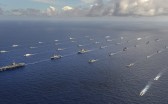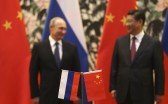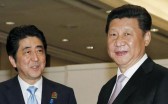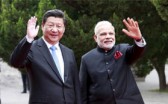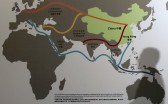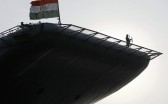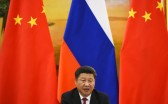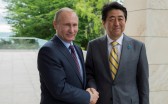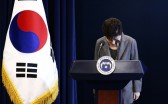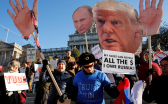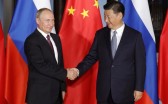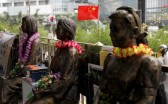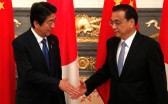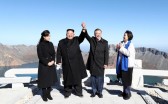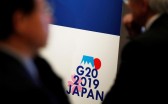The year 2015 witnessed the formation of new strategic triangulations involving India. Frameworks including US-India-Japan and India-Australia-Japan were added to the existing Indian trilateral engagements, including the India-China-Russia arrangement, which has been in operation since 2002. The new trilateral designs, especially the US-India-Japan arrangement, are sometimes interpreted through the narrative of fluidity in regional geopolitics, especially managing the emergence of a sinocentric Asian Order. The key question is whether the proposed norms and value-based trilateral designs in the Indo-Pacific are aimed at containing the expansion of Chinese clout or are part of triangular fluidity, where the United States, India, and Japan work in coordination on a few, specific issues, while disagreeing on others.
It is critical to note that while two of the three nations in the US-India-Japan triangle are formal alliance partners for more than six decades, India believes in the notion of strategic autonomy as the guiding principle of its foreign policy rooted in its national identity. Undeniably, the relative importance of each nation in the eyes of the others has evolved over the years, but each actor in the equation, with their apparent asymmetry and differences in relative power, are solely guided by its national interests. To comprehend India’s approach towards this strategic triangle, it is critical to trace the position of an emerging India as it began featuring in the US-Japan equation, draw from the depths of their bilateral relations, and situate the newly upgraded trilateral in the larger regional dynamics.
India in the US-Japan alliance
The post-Cold War realities led to readjustment of US attitudes toward India. Escalating US interest in India as a stabilizing factor in Asia led Washington to cultivate robust bilateral relations. As the Defense Department recognised India as a long-term security partner, India started figuring in Japanese security discourse too. Consequently, Japan was required to reassess its approach toward India, which was for long shaped by the ideological compass of the Cold War divide. Fostering partnership with India featured in the US-Japan Security Consultative Committee, which welcomed “India as a strong and enduring Asia-Pacific partner,”1 and pushed for promoting trilateral dialogue involving the United States, Japan, and India. Moreover, at the Raisina Dialogue in March 2016, Admiral Harry B. Harris argued for expanding the India-Japan-Australia trilateral to a quadrilateral including the United States,2 facilitating the rules-based order. This concurs with Abe’s initial Quadrilateral Initiative.
Despite the narrative of shared values, India barely featured in the radar of the United States or Japan before the 2000s. But eventually India’s standing as a credible naval power with potential to safeguard critical maritime space caught the attention of these two alliance partners and both started investing energy in building a partnership with India. Moreover, developments in the India-US relations facilitated India-Japan relations. Some experts have opined that Japan considers the alliance with the United States as the mainstay of its security policy, and it utilizes other partnerships such as with India to support the alliance.3 Thus, India found a place in Japan’s maiden National Security Strategy and the National Defense Program Guidelines.
Bilateralism Shaping the U.S.-India-Japan Trilateral Formation
The US-India-Japan trilateral ministerial framework has drawn from the strengthening of all three bilateral relationships. Pushing the envelope of cooperation, the US-Japan-India trilateral dialogue at the director-general level, which was instituted in 2011, has been elevated to a ministerial dialogue in September 2015. Maritime interests, with a focus on disaster response capabilities and humanitarian assistance, constitute one of the important components of this trilateral design. Cooperation on regional connectivity, women’s skill enhancement, and economic empowerment also featured in the inaugural trilateral meeting.4 Subsequently in October, Japan was incorporated into the India-US Malabar exercises as a permanent feature. The goal is improving cooperation between navies and buttressing capacities for prompt action while confronting challenges related to disaster prevention and relief.5
The US Department of Defense articulates strategic congruence between its rebalance policy and India’s Act East course and further argues the case of buttressing India’s maritime strengths as a net security provider in the Indian Ocean region and beyond.6 The US-India Joint Strategic Vision for the Asia-Pacific and Indian Ocean Region enunciated in January 2015 and the US-India Joint Statement on the Visit of Secretary of Defense Carter to India in April 20167 underscore the importance of safeguarding critical maritime sea-lanes and ensuring freedom of navigation and over flight throughout the region, including in the South China Sea. Furthermore, the Joint Strategic Vision outlines the objective of boosting regional dialogues and advancing trilateral consultations with regional countries in the coming five years.8
As Secretary Carter and Defense Minister Parrikar agreed, in principle, to conclude a Logistics Exchange Memorandum of Agreement, and India’s Agreement Concerning Transfer of Defense Equipment and Technology Cooperation with Japan instilled new depth to the bilateral equation, India’s Special Strategic and Global Partnership with Japan and the Joint Vision 2025 added qualitative value to the bilateral relationship. The joint vision, among other issues, discussed maritime themes and endorsed the principles of peaceful settlement of disputes, the rule of law, freedom of navigation, and over flight, and noted the importance of sea lines of communication (SLOCs) in the South China Sea for regional energy security and trade and commerce. Both urged “states to avoid unilateral actions that could lead to tensions in the region.”9
Situating the Triangle within the Larger Regional Dynamics
What is the significance of the US-India-Japan ministerial trilateral framework for India? Any attempt at seeking an answer needs to situate this trilateral within the larger regional geopolitical and geo-economic landscape. Popular perceptions often subscribe to the notion of balancing China. Analyzing this trilateral in isolation is too narrow an approach at a time when China is pushing for a new model of great power relations with the United States and the region has concerns regarding the strength of US commitment in the backdrop of an evolving G2 paradigm. There may be structural tensions between the established power and the rising challenger in the Asia-Pacific region, but beyond that there is evidence of consonance between the two in other regions, for instance in Afghanistan. Moreover, the economic component of US-China relations has significantly complicated the strategic paradigm.
Under Modi, India is certainly more forthcoming in articulating its position on a few specific regional issues where India’s interests are involved. This triangle, for instance, discussed freedom of navigation in South China Sea, but this in no way limits what Modi envisions as the strategic role for India as a leading power, not just a balancer in international politics.10 Since India is not as dependent on the United States with regard to its security as Japan is, India is guided by a balance of interests and realistically engages with all the key players including China on particular issues. For instance, on the sidelines of the UN General Assembly, while Foreign minister Sushma Swaraj discussed maritime issues in the inaugural US-India-Japan meeting, she also participated in the BRICS (Brazil, Russia, India, China and South Africa) foreign ministers’ meeting, where climate change negotiations and reconstitution of global financial institutions emerged as shared concerns.
In April 2016, while India invested its energy in reinforcing defense cooperation with the United States during Defense Secretary Carter’s visit, it also discussed the prospects of an “open, inclusive, indivisible and transparent security and cooperation architecture”11 in the Asia-Pacific region with Russia and China. The South China Sea also featured in the latest Russia-India-China foreign ministers’ trilateral meeting, where India, in keeping with its position, argued that the provisions of the United Nations Convention on the Law of the Sea (UNCLOS) should be implemented. In February 2016, the first round of the China-India maritime cooperation dialogue was held, where they decided to increase practical cooperation in joint efforts to ensure maritime security.
India conducted a joint counter-terrorism drill with China around the same time as Modi created space for Japan in the Malabar exercises in October 2015. Engaging with the Chinese military is not exclusive to India; the Royal Australian Navy conducted exercises with the People’s Liberation Army (PLA) navy and the start of US freedom of navigation operations in October-November. Earlier in August, China, the United States, and Australia held military drills aimed at strengthening the three armies’ inter-operational abilities. China also joined the US-led Rim of the Pacific maritime exercises.
It is true that all three actors have their divergences with China, but all of them are engaging with China, at their own pace, given its significance in the Asian calculus. For instance, Japanese bureaucrats worked hard for resumption of summit meetings with President Xi Jinping and, subsequently, for the China-Japan-South Korea trilateral summit. The point is that an anti-China thought process should not motivate US-India-Japan cooperation. It is not necessary also since these three nations have other shared interests for working together.12 There should be a realistic expectation of what this trilateral can achieve.
India’s Approach
India’s approach toward geopolitical realities is guided by a balance between engagement and autonomy.13 Under Modi it has enunciated greater strategic coordination as witnessed within both trilateral and bilateral designs. However, this should not be interpreted as dilution of the fundamental values of Indian foreign policy. India is expected to pursue its quest for multi-polarity and great power identity and pragmatically engage with all the important players including the United States and China to ensure regional peace and stability, which are critical for facilitating development. Foreign Secretary Jaishankar argued that as India aims to modernize, it seeks resources and technology from global partners. This is the key focus in India’s diplomatic endeavors. “Both the United States and China—and indeed the ASEAN, Japan, Republic of Korea and Europe—can contribute to this transformation. The centrality of this commitment ensures that India will set a positive and inter-active agenda with other major powers and groupings.”14
Modi aims to bolster India’s leading power status. To this end, he has articulated India’s vision for the Asia-Pacific and engaged in strategic coordination, including the US-India-Japan as one among several trilaterals. There is certainly greater coordination on a few specific regional issues, but Modi has simultaneously engaged with China in building a closer developmental partnership and adopted a different approach with regard to the Asian Infrastructure Investment Bank from the United States and Japan. India is expected to boldly engage, but certainly not align, with all regional actors to leverage partnerships. India does not subscribe to the practice of alliance formation. Balance of interest is driving the Indian leadership since it does not see a zero-sum game.
1. United States Department of State, “Joint Statement of the Security Consultative Committee Toward a Deeper and Broader US-Japan Alliance: Building on 50 Years of Partnership,” June 21, 2011, http://www.state.gov/r/pa/prs/ps/2011/06/166597.htm.
2. Harry B. Harris, Jr., “Let’s Be Ambitious Together” (remarks from the Raisina Dialogue, March 2, 2016), http://www.pacom.mil/Media/SpeechesTestimony/tabid/6706/Article/683842/raisina-dialogue-remarks-lets-be-ambitious-together.aspx.
3. Noboru Yamaguchi and Shutaro Sano, “India-Japan Security Cooperation: In Pursuit of a Sound and Pragmatic Partnership,” in Poised for Partnership: Deepening India-Japan Relations in the Asian Century, eds. Rohan Mukherjee and Anthony Yazak(Oxford:Oxford University Press, 2016), 153-178.
4. Ministry of External Affairs, Government of India, “Inaugural US-India-Japan Trilateral Ministerial Dialogue in New York,” September 30, 2015, http://www.mea.gov.in/pressreleases.htm?dtl/25868/Inaugural+USIndiaJapan+Trilateral+Ministerial+Dialogue+in+New+York.
5. Ministry of Defense, Government of India, “Exercise Malabar – 15,” October 15, 2015, http://pib.nic.in/newsite/PrintRelease.aspx?relid=128755.
6. United States Department of State, “The Asia-Pacific Maritime Security Strategy: Achieving US National Security Objectives in a Changing Environment,” http://www.defense.gov/Portals/1/Documents/pubs/NDAA%20A-P_Maritime_SecuritY_Strategy-08142015-1300-FINALFORMAT.PDF.
7. United States Department of State, “India-United States Joint Statement on the visit of Secretary of Defense Carter to India April 10-13, 2016,” Press Operations, Release No: NR-124-16, April 12, 2016, http://www.defense.gov/News/News-Releases/News-Release-View/Article/718589/india-united-states-joint-statement-on-the-visit-of-secretary-of-defense-carter.
8. The White House, “US-India Joint Strategic Vision for the Asia-Pacific and Indian Ocean Region,” Office of the Press Secretary, January 25, 2015, https://www.whitehouse.gov/the-press-office/2015/01/25/us-india-joint-strategic-vision-asia-pacific-and-indian-ocean-region.
9. Ministry of External Affairs, Government of India, “Joint Statement on India and Japan Vision 2025: Special Strategic and Global Partnership Working Together for Peace and Prosperity of the Indo-Pacific Region and the World (December 12, 2015),” December 12, 2015, http://www.mea.gov.in/bilateraldocuments.htm?dtl/26176/Joint_Statement_on_India_and_Japan_Vision_2025_Special_Strategic_and_Global_Partnership_Working_Together_for_Peace_and_Prosperity_of_the_IndoPacific_R.
10. S. Jaishankar, “India, the United States and China” (IISS-Fullerton Lecture, Singapore, July 20, 2015), https://www.iiss.org/en/events/events/archive/2015-f463/july-636f/fullerton-lecture-jaishankar-f64e.
11. Ministry of External Affairs, Government of India, “Joint Communiqué of the 14th Meeting of the Foreign Ministers of the Russian Federation, the Republic of India and the People’s Republic of China,” April 18, 2016, http://www.mea.gov.in/bilateraldocuments.htm?dtl/26628/Joint+Communiqu+of+the+14th+Meeting+of+the+Foreign+Ministers+of+the+Russian+Federation+the+Republic+of+India+and+the+Peoples+Republic+of+China.
12. Richard M. Rossow, Brad Glosserman, Toru Ito, and Anupam Srivastava, “US-Japan-India cooperation: a trilateral whose time has come,” PacNet #76, Center for Strategic and International Studies, October 20, 2014,
http://csis.org/publication/pacnet-76-us-japan-india-cooperation-trilateral-whose-time-has-come.
13. “India’s Foreign and Security Policy: Expanding Roles and Influence in the Region and Beyond,” Chapter 1, East Asian Strategic Review 2013.
14. S. Jaishankar, “India, the United States and China.”
